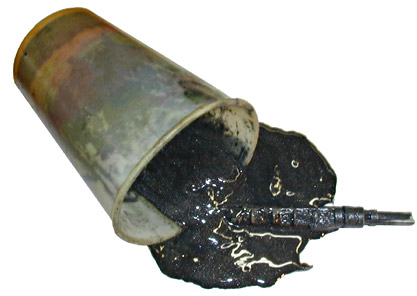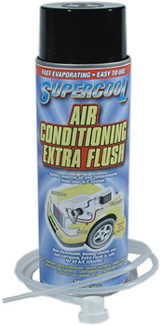 |
Personal Protective Equipment (PPE) must always be worn while working with flush agents. Special precautions must be observed and adequate ventilation must be provided. Be sure you read and understand manufaturers directions before using flush chemicals and tools. |
Please Note: Most OEM's do not recommend system flushing. Most prefer the use of filters, or special live flush procedures. When in doubt, consult the factory service manual. Some of the procedures listed here are generally only accepted by the aftermarket.
Flushing an Automotive Air Conditioning System
Flushing must be performed when the system is contaminated or you suspect there is debris in the system from compressor failure.When a/c compressors fail, bad things can happen. The typical a/c compressor is built like a small reciprocating engine. They have cylinders, pistons, piston rings, valves, bearings, etc.. When a compressor fails it often sheds fragments of these internal components. This can happen all at once or slowly over time. Little bits of compressor can end up in your condenser, hose assemblies, orifice tube/expansion valve, evaporator and accumulator/filter-drier. The photo below illustrates what you might find after a compressor failure. It was obvious we would need to flush the system after inspecting the debris on the orifice tube.
 |
You can almost be sure that this debris would circulate through your system and the cycle would repeat itself as your new compressor grinds to a halt.
| Flushing also removes excess oil from the system. If you suspect the system contains too much oil, flushing is a way to start fresh so you can establish the correct quantity of refrigerant oil in the system. |
Flushing is often performed by using a flush solvent and a flush gun. The flush gun is nothing more than a pressure rated canister that has a blow gun attached to it. Solvent is poured into the flush gun, and a compressed air source is attached to it. The compressed air forces the flush solvent through the various a/c components via the rubber tipped blow gun.
Recently, aerosol flush solvents have been made available. These are aerosol cans that contain a flush solvent and some type of application tube. In either case, chemical flushing requires dry compressed air - or - nitrogen to effectively blow through and dry the components.
 |
|
|


